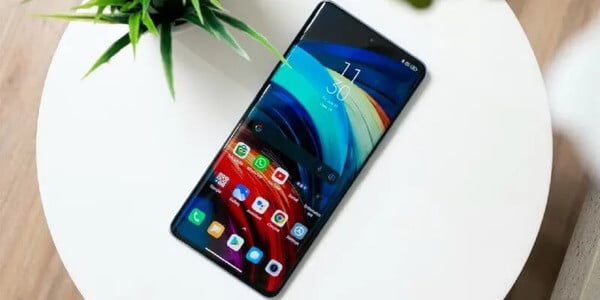Apps on your Android phone require permissions to access various apps and data to provide you with the most accurate details. However, some apps can abuse this privilege to collect your personal information by requesting permissions they don't need. Fortunately, all Android phones allow you to control what data apps can access. This post will share the steps for how to enable, disable, and manage app permissions on Android. The screenshots in this post are taken from a Samsung phone running Android 12. The steps involved remain roughly the same for all Android phones.
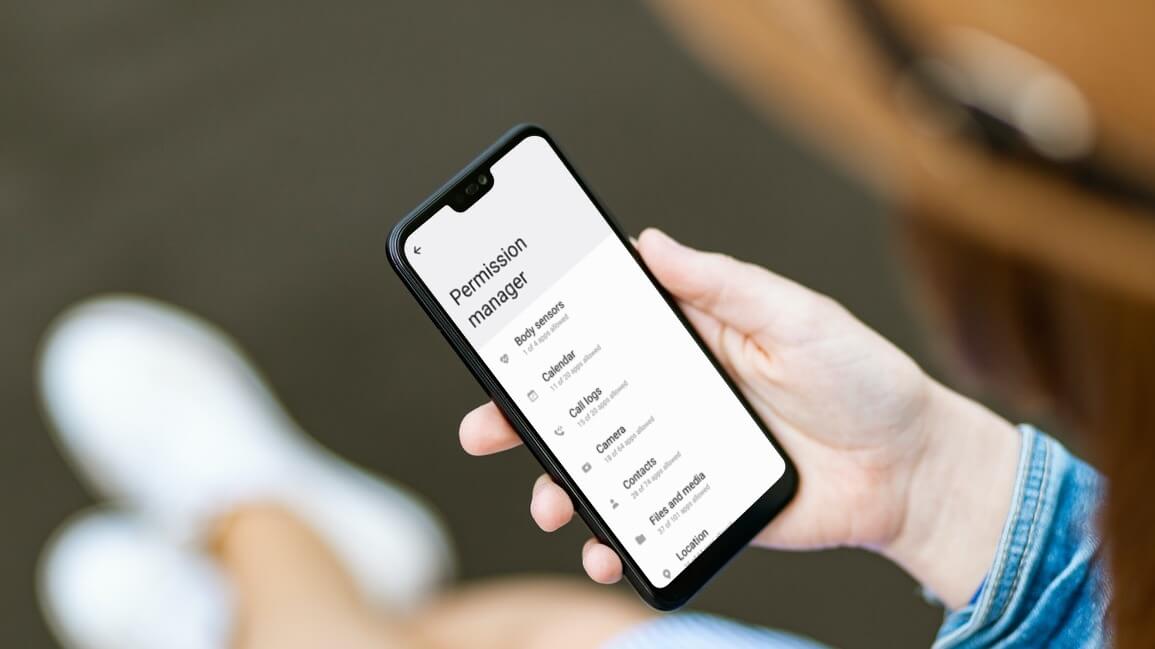
How to enable or disable permissions for individual apps
When you use any app for the first time, it asks for relevant permissions to access things like location, camera, contacts, etc. However, if you previously accepted all these prompts without thinking, you can always modify these permissions later.
So, if you are looking to enable or disable permissions for a particular app, here is what you need to do.
Step 1: Open Settings app on your phone and go to Applications.
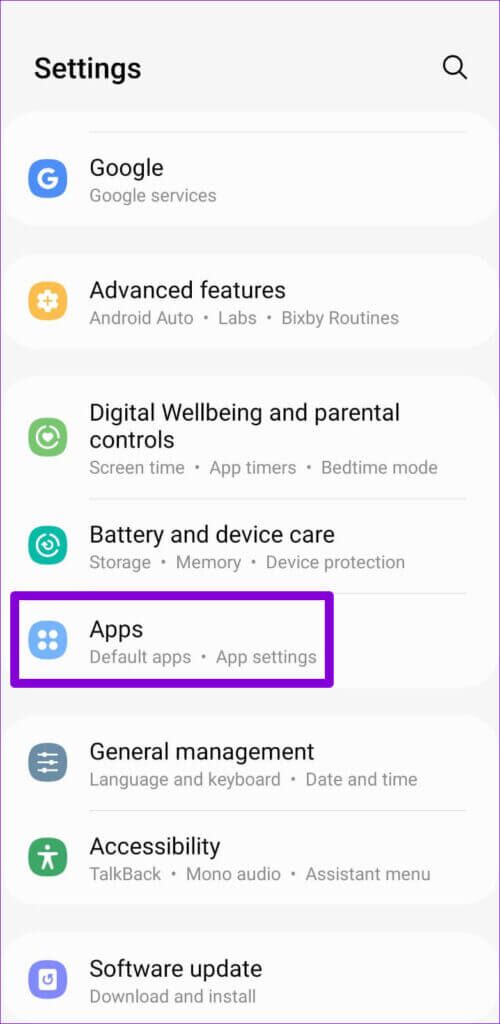
Step 2: Scroll down to find The app whose permissions you want to modify and click on it. Alternatively, you can also use Search tool In the upper right corner to select Application site quickly.
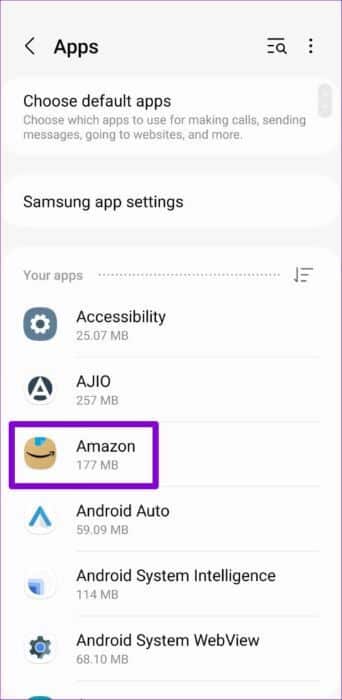
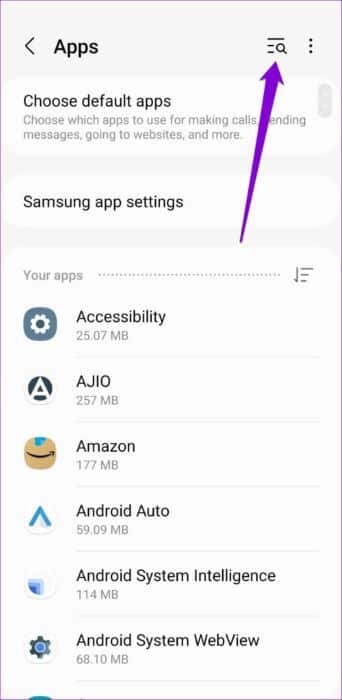
Step 3: In a page Application information , Click Permissions. You will find a list of permissions under the Allowed and Disallowed sections.
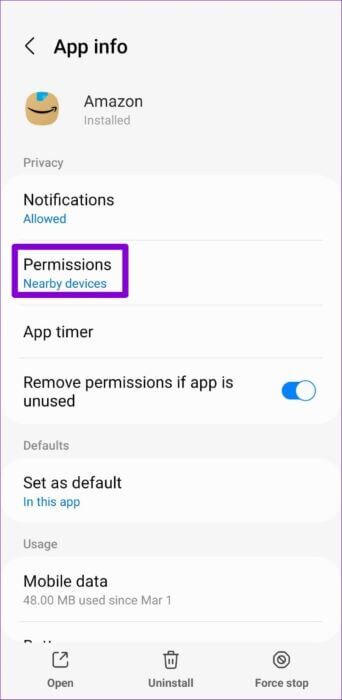
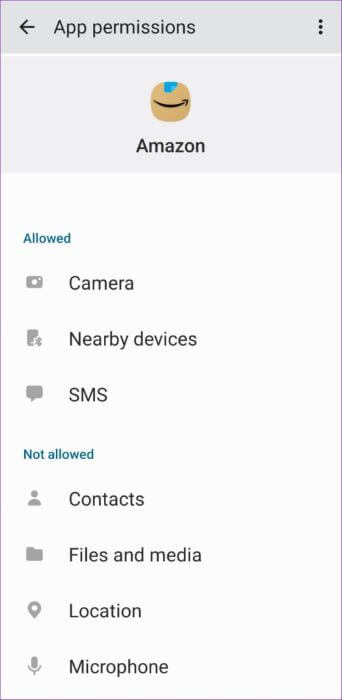
Step 4: Review each permission and allow or deny it as you see fit.
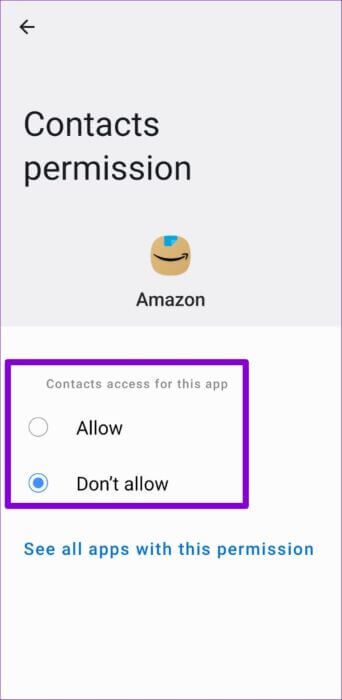
The options you'll get when modifying permissions will vary depending on the permission itself. You'll find two standard options in most categories: Allow or Disallow.
For permissions like camera, microphone, and location, you'll see options like “Allow only while using the app” and “Ask each time.”
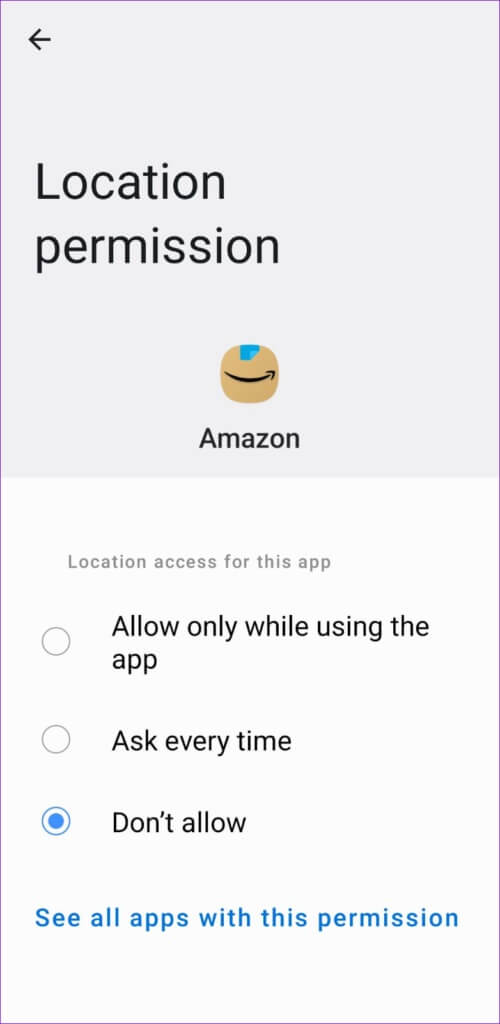
You'll need to repeat these steps for each app whose permissions you want to modify.
How to enable or disable permissions for multiple apps at once
If you are looking for Manage specific permission for multiple apps Meanwhile, your Android phone also lets you enable or disable app permissions based on categories. For example, if you're looking to manage location permissions for all your apps at once, this method will save you time. You'll need to access your phone's permissions manager. Here's how.
Step 1: Open Settings app On your phone, scroll down to tap on Privacy.
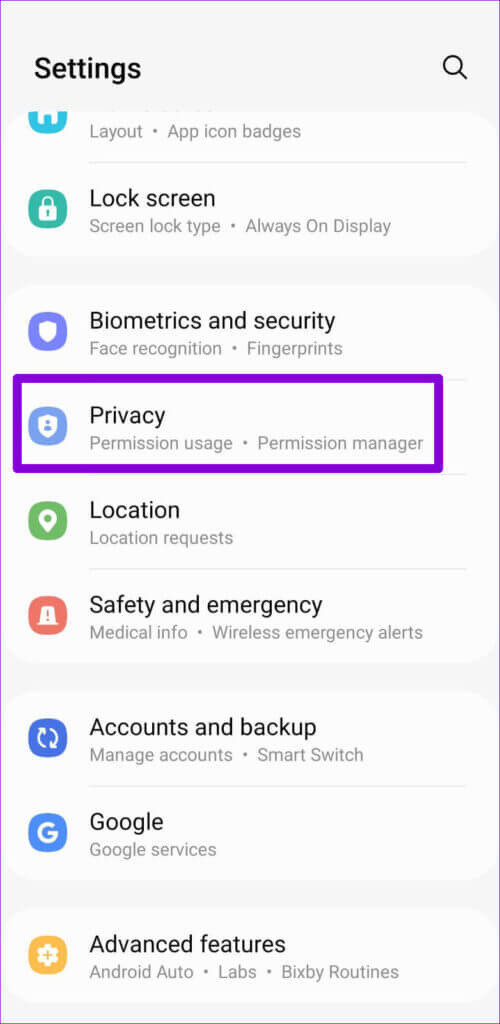
Step 2: Click on Permission manager.
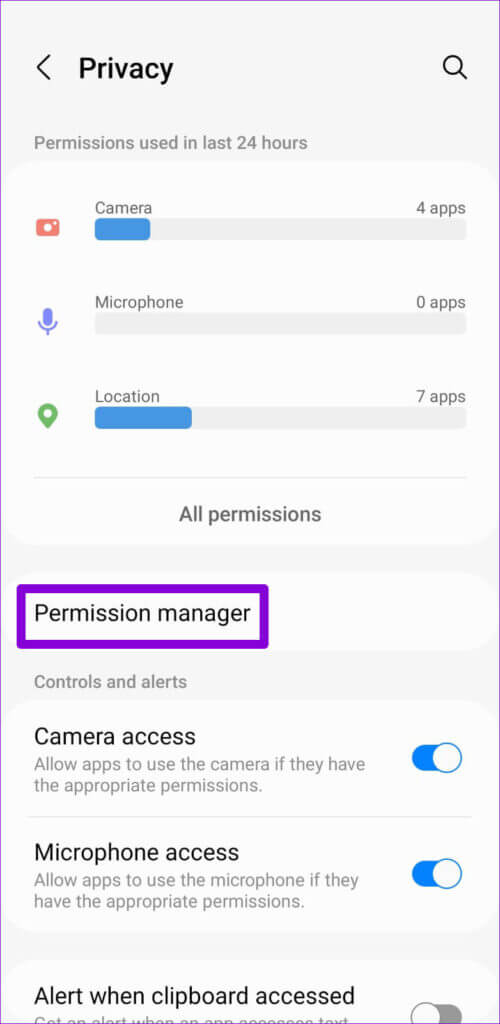
Step 3: You will find Various permissions For the app, such as camera, contacts, microphone, etc., tap on the permission you want to configure. For illustrative purposes, we will modify Access permission To contacts.

Step 4: You'll find a list of apps categorized by their accessibility. Scroll through each app to quickly allow or disallow contact access.
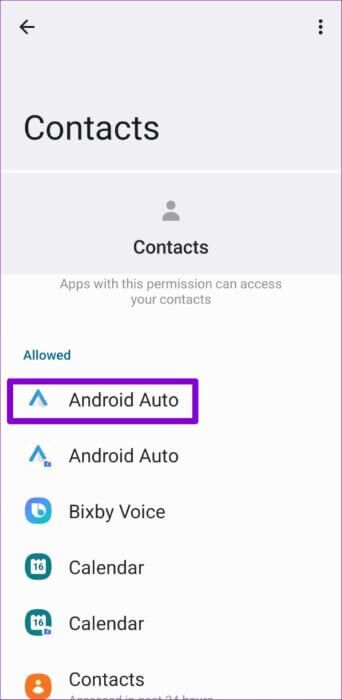
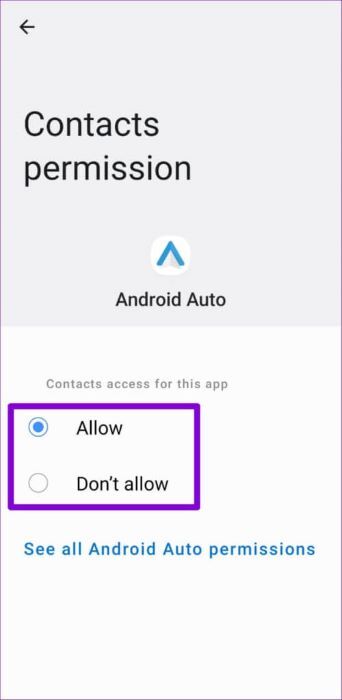
Similarly, you can repeat the above steps to manage camera, microphone, and other permissions for multiple apps at once.
Bonus: How to Automatically Deny Permissions to Unused Apps
As we just learned, managing app permissions on Android is relatively easy. Additionally, your Android phone also allows you to revoke app permissions for apps you haven't used in a while. This can be useful if you don't use an app often and want to prevent it from accessing sensitive information. Here's how to enable it.
Note: This option is only available for phones running Android 11 or higher.
Step 1: Open the Settings app on your phone and scroll down to tap Apps.

Step 2: Tap the app you want to revoke permission for after a prolonged period of inactivity. On the app's info page, enable the switch next to "Remove permission if app is not used."


Once enabled, your phone's Android operating system will automatically revoke the relevant app's permissions if you haven't used it for a few months. Although there's no specific timeframe for this, Android will send you a notification when this happens.
Unfortunately, there's no way to apply this setting to all apps at once. Therefore, you'll have to repeat these steps for each app individually. We recommend enabling this option for apps you don't use regularly or those you downloaded from unknown sources.
Dealing with care
Google has certainly made managing app permissions easier with each Android update. The option to automatically revoke app permissions after inactivity is a welcome development. While you may not need to check these permissions frequently, it's nice to know how easy the process is.








